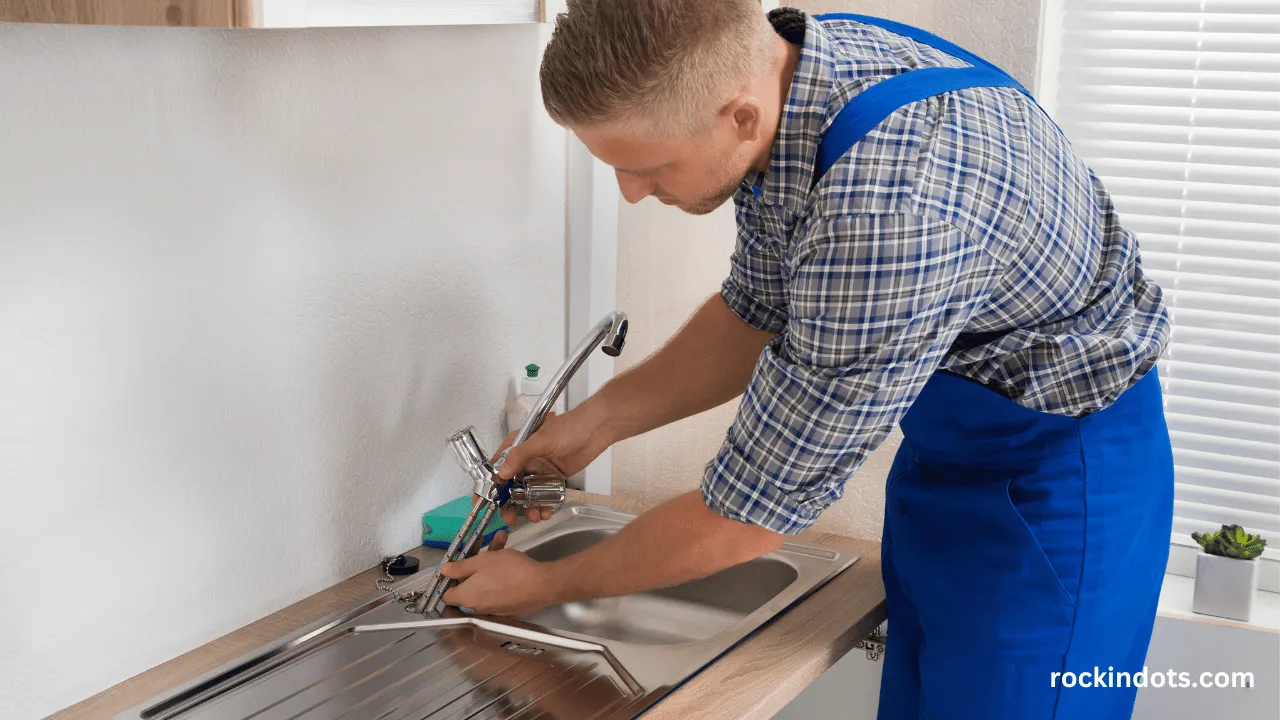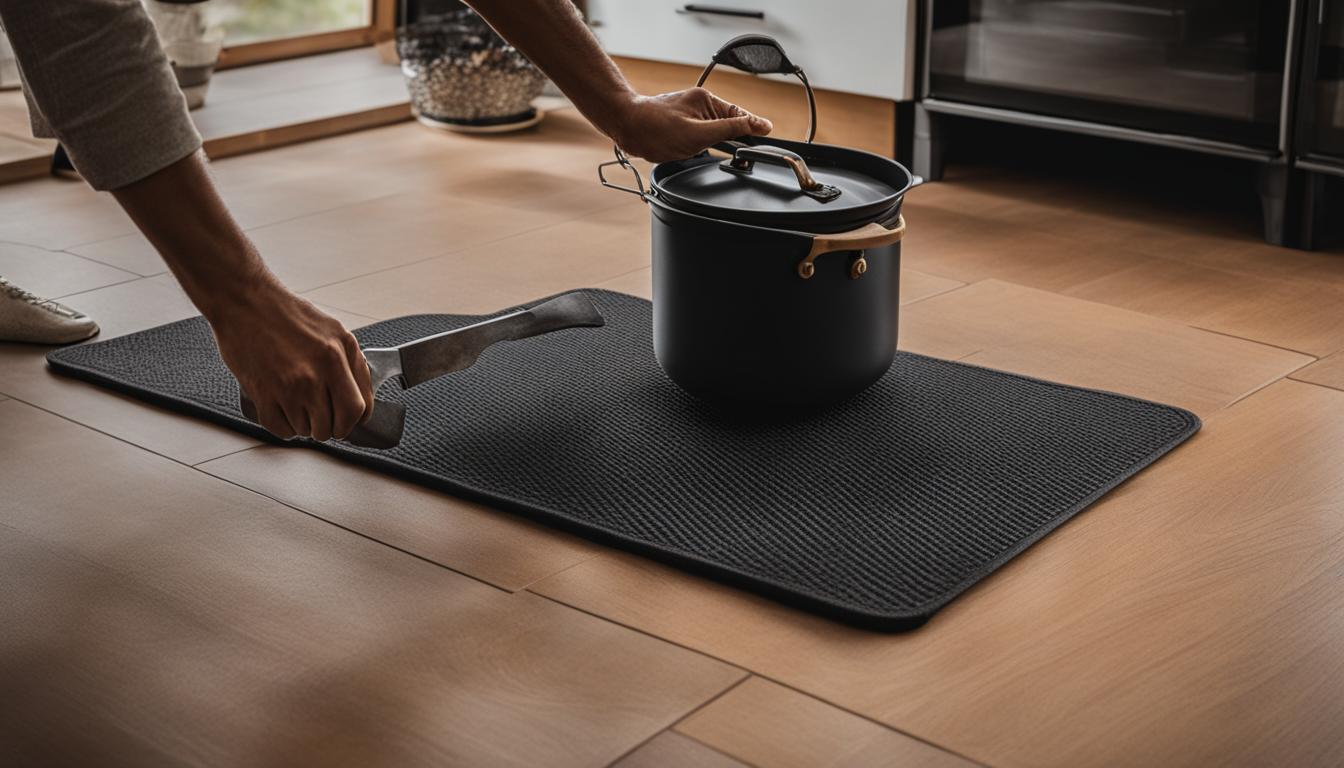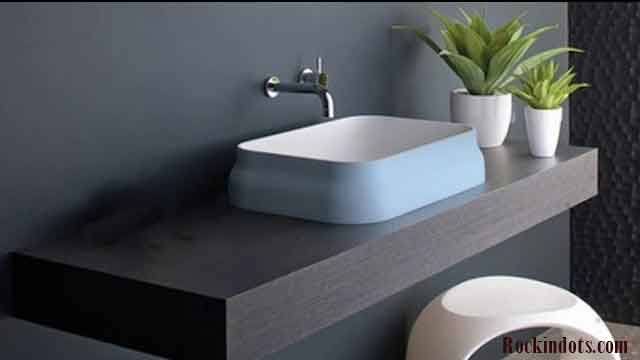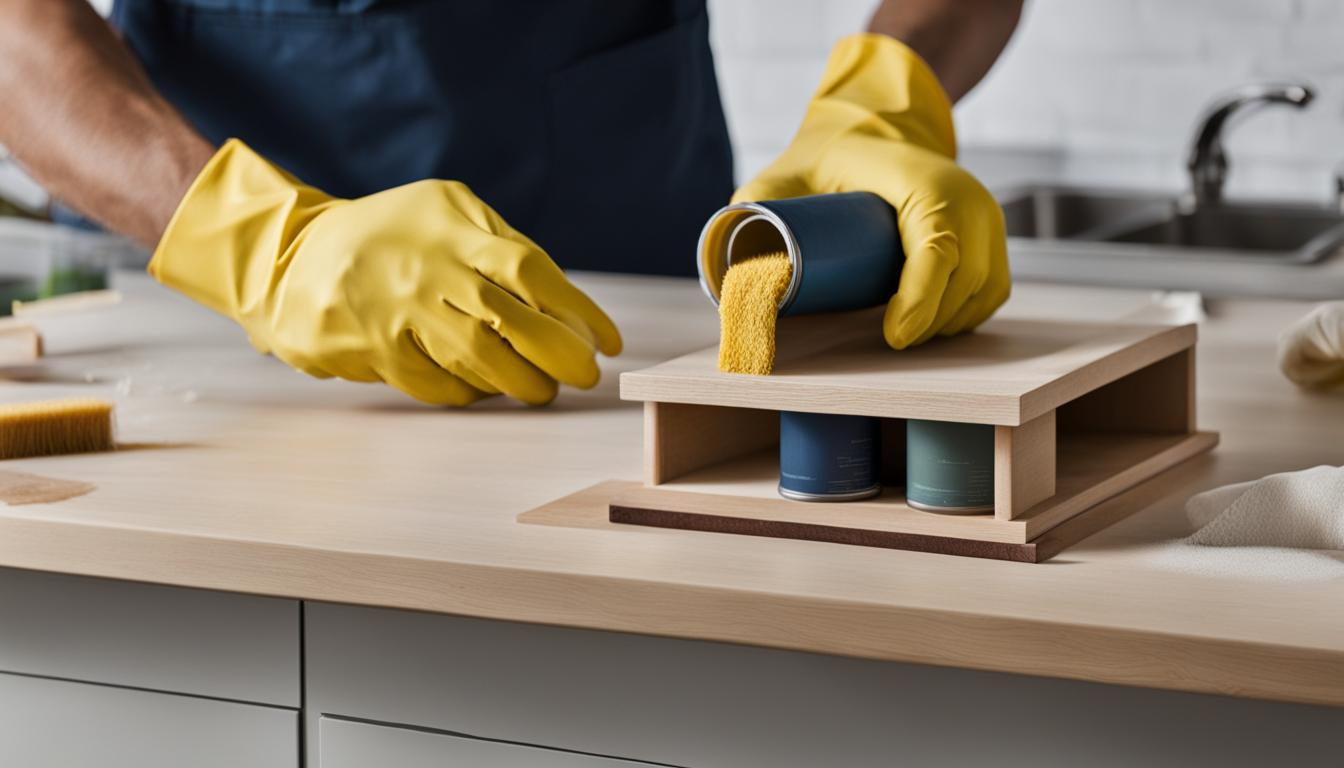If you’re tired of dealing with a wobbly kitchen faucet handle, don’t worry – you can fix it yourself with just a few simple steps.
By tightening the handle, you can restore stability and functionality to your kitchen faucet. In this guide, I will walk you through drawing a loose kitchen faucet handle, providing you with all the information you need to complete the task successfully.
Contents
- 1 Tools and Materials Needed
- 2 Identifying the Type of Faucet
- 3 Tightening a Single-Handle Faucet Handle
- 4 Tightening a Double-Handle Faucet Handle
- 5 Additional Tips and Considerations
- 6 Troubleshooting Common Problems
- 7 Conclusion
- 8 FAQ
- 8.1 How do I tighten a loose kitchen faucet handle?
- 8.2 What tools and materials do I need to tighten a kitchen faucet handle?
- 8.3 How do I identify the type of faucet I have?
- 8.4 How do I tighten a single-handle faucet handle?
- 8.5 How do I tighten a double-handle faucet handle?
- 8.6 Are there any additional tips or considerations when tightening a kitchen faucet handle?
- 8.7 What should I do if tightening the handle doesn’t solve the problem?
- 9 Source Links
Key Takeaways:
- Properly tightening the kitchen faucet handle can eliminate wobbling and looseness.
- Gather the necessary tools and materials before starting the process.
- Identify the type of faucet you have to determine the appropriate tightening method.
- For single-handle faucets, use an adjustable wrench or channel locks to tighten the screws or nuts.
- For double-handle faucets, follow similar steps to tighten both handles.
Tools and Materials Needed
Before tightening your kitchen faucet handle, gathering the necessary tools and materials is essential. Here’s what you’ll need:
| Tools | Materials |
|---|---|
| Adjustable wrench or channel locks | – |
| Flashlight | – |
| Wrench (if necessary) | – |
| Screwdriver (if necessary) | – |
| – | Plumber’s tape |
| – | Thread sealant |
Having these tools and materials ready will ensure a smooth and efficient process as you tighten your kitchen faucet handle.
Identifying the Type of Faucet
Before you begin tightening the kitchen faucet handle, you must identify the type of faucet you have.
There are different types of faucets, such as single-handle faucets and double-handle faucets, and each may require a slightly different approach to tightening the handle. Take a close look at your faucet to determine which type you have.
Here are some common types of kitchen faucets:
- Single-handle faucets: These faucets have a single lever or knob that controls both the temperature and water flow. They are usually found in newer kitchens and are known for their sleek and modern design.
- Double-handle faucets: These faucets have separate handles for hot and cold water. They are more traditional in design and often found in older kitchens.
- Hands-free faucets use motion sensors to control the water flow and temperature. They are popular in commercial kitchens but are also becoming more common in residential kitchens for their convenience and hygiene benefits.
Once you have identified the type of faucet you have, you can proceed with the appropriate steps to tighten the loose handle. Remember, different types of faucets may require other tools and techniques, so it’s essential to be aware of the specific requirements of your faucet.
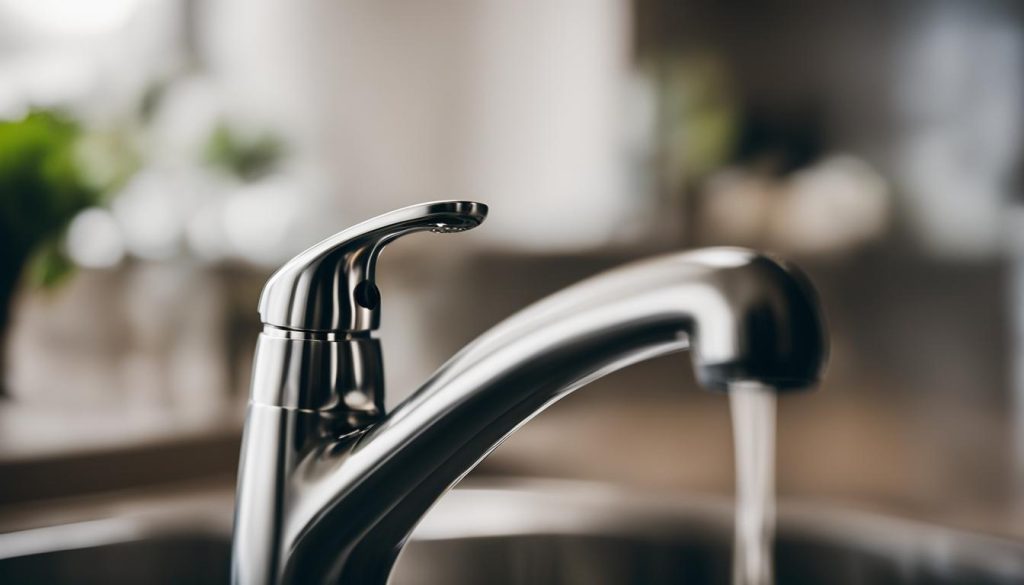
Tightening a Single-Handle Faucet Handle
If you have a single-handle kitchen faucet, follow these steps to tighten the handle:
- Turn off the water supply to the faucet.
- Clear the space underneath the sink.
- Use an adjustable wrench or channel locks to tighten the screws or nuts that secure the handle to the faucet base.
- Check the handle for stability and make any necessary adjustments.
- Please turn on the water supply and test the faucet to ensure it works correctly.
| Tightening a Single-Handle Faucet Handle |
|---|
| A single-handle kitchen faucet is a standard fixture in many households. It provides convenience and ease of use, but the handle may become loose over time, causing a shaky or unstable feel. Fortunately, tightening an open single-handle faucet is a simple task that can be done without the need for professional help. To tighten the handle, turn off the water supply to the faucet. This will prevent any accidental leaks or water damage while you work. Then, clear the space underneath the sink to provide enough room for your tools and hands. Next, use an adjustable wrench or channel locks to tighten the screws or nuts that secure the handle to the faucet base. Make sure to tighten them evenly and avoid overtightening, as this could cause damage to the faucet or sink. After securing the handle, check for stability by giving it a gentle shake. If it still feels loose, make any necessary adjustments and tighten the screws or nuts further. Once satisfied with the handle’s stability, turn on the water supply and test the faucet. Check for any leaks or irregularities in the water flow. If everything works correctly, you’ve successfully tightened the single-handle faucet handle. Remember, regular maintenance and inspection of your kitchen faucet can help prevent loose handles and other issues in the future. You can ensure a comfortable and functional kitchen environment by tightening a flexible faucet handle. |
Tightening a Double-Handle Faucet Handle
If you have a double-handle kitchen faucet, tightening the handle may be slightly different. Follow these steps to pull the handle:
- Turn off the water supply to the faucet.
- Clear the space underneath the sink.
- Use an adjustable wrench or channel locks to tighten the screws or nuts that secure the handle to the faucet base.
- Check both handles for stability and make any necessary adjustments.
- Please turn on the water supply and test both handles to ensure they work correctly.
| Step | Description |
|---|---|
| 1 | Turn off the water supply to the faucet |
| 2 | Clear the space underneath the sink |
| 3 | Use an adjustable wrench or channel locks to tighten the screws or nuts that secure the handle to the faucet base |
| 4 | Check both handles for stability and make any necessary adjustments |
| 5 | Please turn on the water supply and test both handles to ensure they work correctly. |
These steps will help you tighten the double-handle kitchen faucet handle and eliminate wobbling or looseness. It’s essential to ensure both handles are secure and functioning properly to maintain the overall stability of your kitchen faucet.
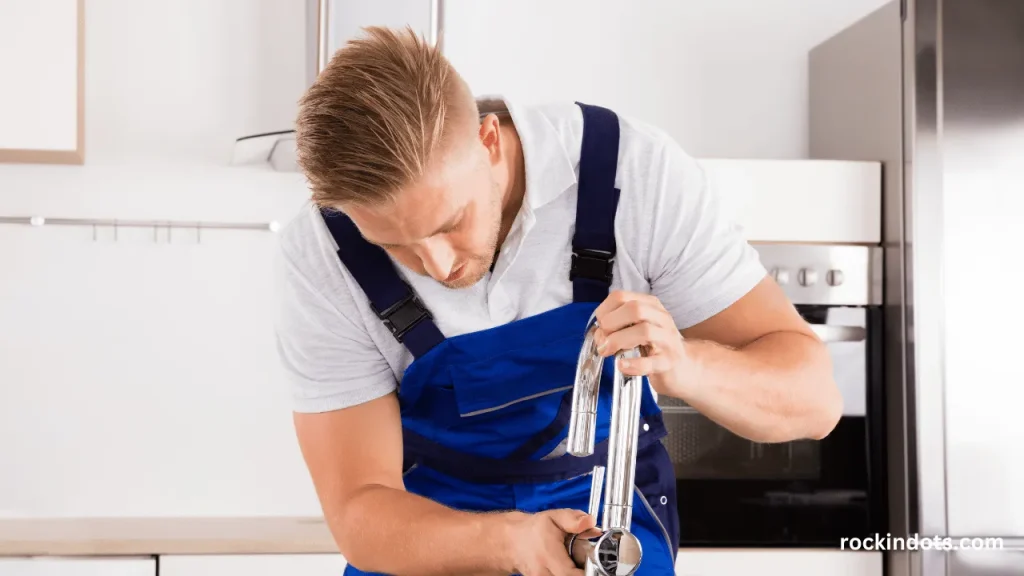
Additional Tips and Considerations
When it comes to tightening your kitchen faucet handle, a few additional tips and considerations can help ensure a successful repair. Here are some things to keep in mind:
- Be careful not to overtighten: While it’s essential to secure the handle, overtightening can cause damage to the faucet or sink. Use a steady hand and check for stability as you tighten.
- Seek professional help if needed: If you encounter any difficulties or if the handle continues to be loose even after tightening, it may be necessary to seek the assistance of a professional plumber. They can provide expert advice and guidance for resolving the issue.
- Consider replacing the faucet: Sometimes, tightening the handle may only provide a temporary solution. If your faucet is old or damaged, it might be time to consider replacing it. A new faucet can improve functionality and eliminate any future handle loosening problems.
Remember, regular maintenance and inspection of your kitchen faucet can help prevent loose handles and other issues in the future. Taking care of your faucet is essential to keeping your kitchen running smoothly.
| Tips for Tightening Your Kitchen Faucet Handle |
|---|
| Be careful not to overtighten the handle. |
| Seek professional help if needed. |
| Consider replacing the faucet. |
Troubleshooting Common Problems
Sometimes, simply tightening the handle may not solve the problem. If you’re still experiencing issues with your kitchen faucet handle, here are a few common problems and potential solutions:
- Leaks:
If your faucet leaks even after tightening the handle, there may be a problem with the faucet cartridge or other internal components. Consider replacing these parts or consult a professional plumber. - Stiff or difficult handle movement:
If your handle is difficult to turn or feels stiff, it may be due to mineral deposits or other debris inside the faucet. Try cleaning the faucet and removing any obstructions. - Handle falls off:
If your handle keeps falling off even after tightening, there may be a problem with the handle assembly itself. Consider replacing the handle or consult a professional for further assistance.
When troubleshooting these problems, it’s essential to identify the underlying issue before attempting any repairs. By understanding the cause of the problem, you can implement the appropriate solution and ensure a secure and functional kitchen faucet handle.
Conclusion
Fixing a loose kitchen faucet handle is a simple DIY task that can save you money and restore functionality to your kitchen. Following the steps outlined in this guide, you can tighten the handle and eliminate any wobbling or looseness.
Remember to take proper safety precautions and consult a professional if you encounter any difficulties. You can enjoy peace of mind and a fully functioning kitchen sink with a stable and secure kitchen faucet handle.
Don’t let a loose handle disrupt your daily kitchen routine. Take the time to tighten it up and ensure a smooth and reliable operation. With just a few adjustments, you can restore the stability of your kitchen faucet handle and prolong its lifespan. So, roll up your sleeves, gather your tools, and get ready to fix that loose kitchen faucet handle.
FAQ
How do I tighten a loose kitchen faucet handle?
To tighten a loose kitchen faucet handle, follow these steps based on the type of faucet you have.
What tools and materials do I need to tighten a kitchen faucet handle?
You will need an adjustable wrench or channel locks, a flashlight, a wrench (if necessary), a screwdriver (if required), a plumber’s tape, and thread sealant.
How do I identify the type of faucet I have?
Take a close look at your faucet to determine if it is a single-handle or double-handle faucet.
How do I tighten a single-handle faucet handle?
To tighten a single-handle faucet handle, turn off the water supply, clear the space underneath the sink, use an adjustable wrench or channel locks to tighten the screws or nuts that secure the handle to the faucet base, check the handle for stability, and turn on the water supply to test the faucet.
How do I tighten a double-handle faucet handle?
To tighten a double-handle faucet handle, turn off the water supply, clear the space underneath the sink, use an adjustable wrench or channel locks to tighten the screws or nuts that secure the handle to the faucet base, check both handles for stability, and turn on the water supply to test the faucet.
Are there any additional tips or considerations when tightening a kitchen faucet handle?
Yes, be careful not to overtighten the handle, seek professional help or consider replacing the faucet if necessary, and regularly maintain and inspect your kitchen faucet to prevent future issues.
What should I do if tightening the handle doesn’t solve the problem?
If tightening the handle doesn’t solve the problem, you may need to replace internal components or consult a professional plumber for assistance.

